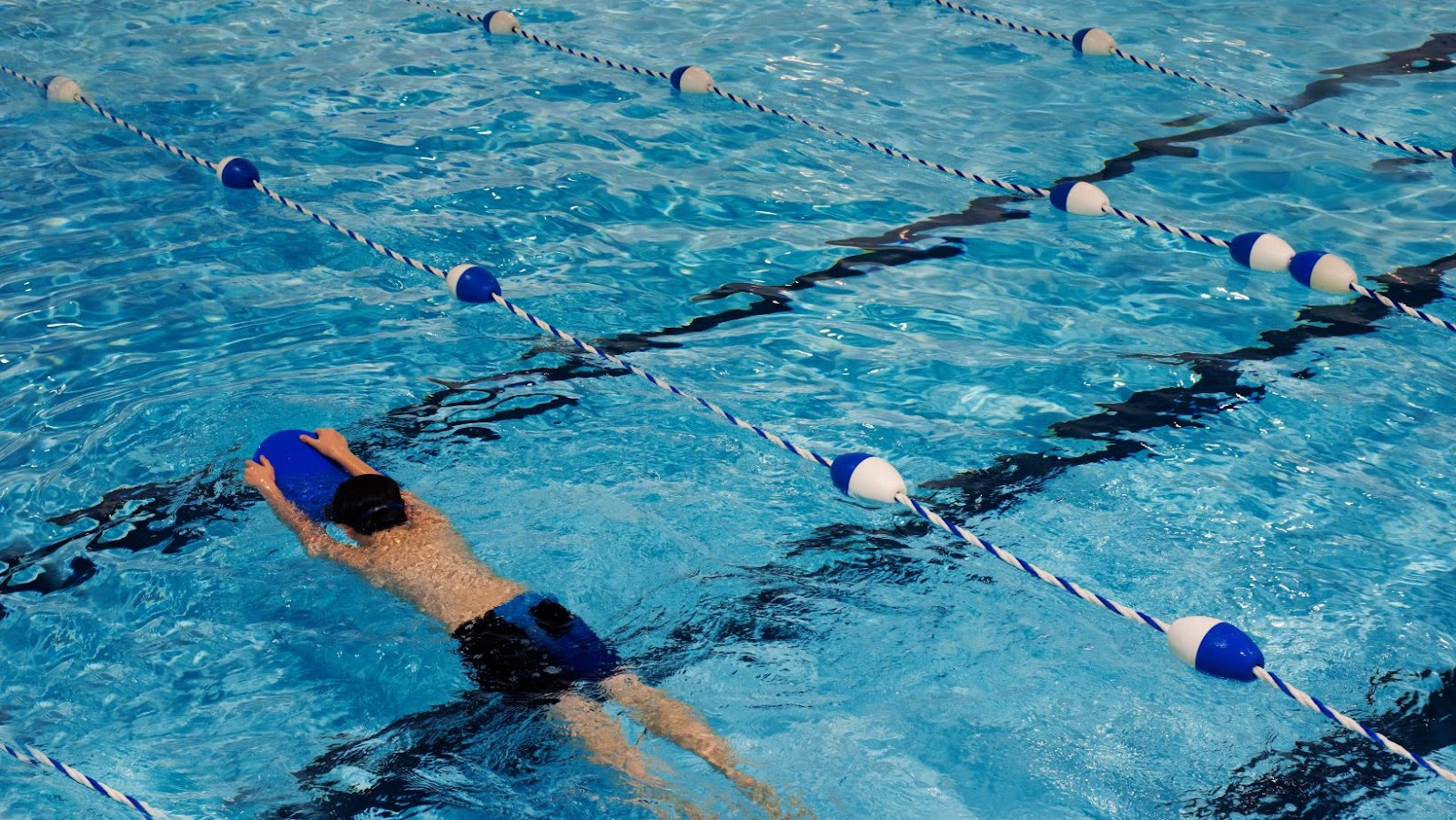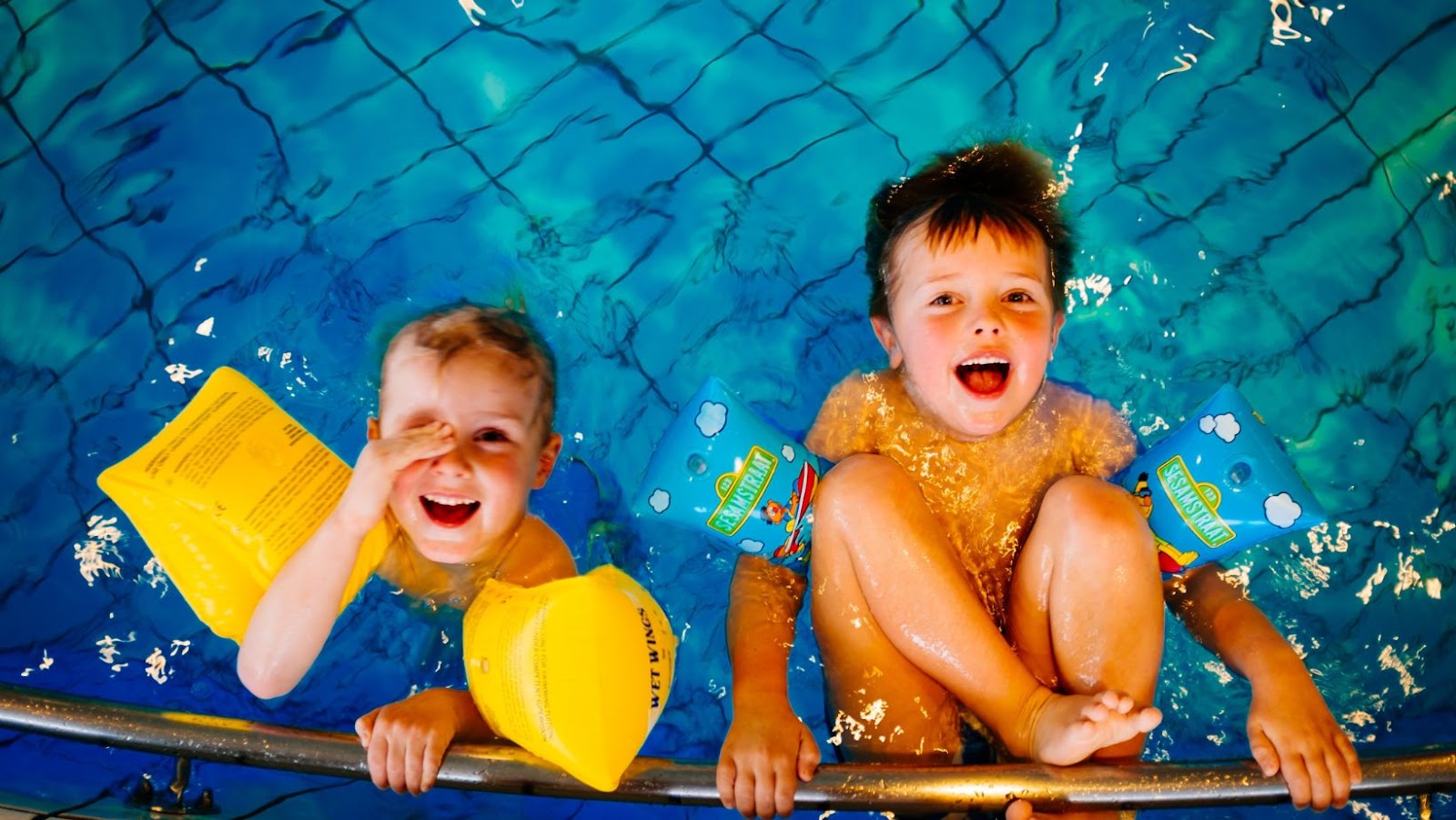
Feeling overwhelmed about teaching your children how to swim? You’re not alone. Learning to swim is essential for your children’s safety and development, and this article will outline the key benefits of swimming for kids. Whether you’re a new parent or just looking for an informative refresher, you’ll gain valuable insight into the importance of swimming for your children.
Here is why your children must learn how to swim:
Swimming Can Save Your Child’s Life
Every year, an alarming number of children around the world die due to drowning incidents. However, by teaching your child how to swim, you can potentially save their life. Swimming is a critical skill that does not solely enhance the physical health of children but can also prevent accidental drowning incidents.
Swimming significantly reduces the risk of drowning and contributes to overall safety in and around water bodies. It is crucial to initiate swimming lessons early on so that children have ample time to develop excellent swimming techniques while building their confidence and comfort in water.
Drowning is the second leading cause of accidental death in children, emphasizing how imperative it is for parents or guardians to prioritize teaching this lifesaving skill. As children are naturally drawn towards water, developing a sense of safety in them through swimming lessons equips them with a valuable survival tool.
A real-life example showcasing the significance of swimming skills involved an incident where two girls aged six and eight successfully survived after being submerged underwater for fifteen minutes in a lake due to exceptional swimming skills they had acquired from formal training. This highlights how vital it is for all children to learn basic swimming techniques and demonstrates that it can genuinely be lifesaving in dire situations.
Swimming may not give you six-pack abs, but it sure beats drowning as a workout.
Great for Health
Regular swimming is a highly beneficial activity for children’s health and fitness. Swimming provides an all-around workout, which enhances endurance, strength, flexibility, and cardiovascular health simultaneously. Additionally, it boosts muscle development while being low-impact and less stress on joints in comparison to other exercises.
Moreover, swimming helps improve coordination and balance while strengthening respiratory systems and lungs. It also reduces the risk of obesity by providing a medium that burns calories, builds strong muscles, and promotes healthy eating habits by increasing appetite.
Swimming aids social development by teaching children teamwork, communication skills, building confidence regularly interacting with others. It can also reduce anxiety and lower the risk of depression in children when they enjoy their water experiences.
Parents can help by ensuring their child’s safety through precautionary measures like using life jackets or swim watches that monitor underwater movements while swimming. They can also motivate them with rewards for progress such as marking milestones; increased duration or distance swum over time help maintain interest in the sport.
Swimming is a fantastic exercise for children as it offers plenty of benefits beyond fun pool activities. With proper training routines and safety measures, parents can make it an integral part of their kid’s lives – providing them with health benefits that will last long into adulthood.
Teaching a baby to swim may not improve their ability to walk, but it sure will make them one impressive crawler.
Improve Motor Skills in Babies
Did you know that introducing babies to swimming can have a significant impact on the development of their motor skills? It’s true! Swimming lessons for infants can assist in the improvement of their gross and fine motor skills, leading to longer-term benefits.
- Swimming helps babies develop better coordination and balance, which can lead to improved motor function.
- The water resistance in swimming strengthens their muscles, promoting the development of their motor skills.
- Babies learn how to control and coordinate their movements as they explore the water environment.
- Swimming also enhances cognitive function through sensory stimulation, leading to better learning outcomes.
- The gentle exercises during swimming lessons increase circulation among infants and strengthen vital organs like lungs, heart and some abdominal muscles.
- Water activities allow baby’s free movement without any impact stress on knees or other joints
In addition, babies who swim regularly exhibit greater confidence, independence and self-awareness. Swimming is a wonderful opportunity for children of all ages to discover new abilities while having fun.
It is noteworthy that while infant swim classes might seem unconventional, studies reveal that playing with your baby in shallow wade pool environments boosts their immune system. Infants submerged under water before six months had Zero risk of developing drowning phobia throughout lives compared to children not taught or immersed after six months of age.
True history: Commencing life saving not-for-profit ‘Infant Aquatics Network’ prioritized infant safety around aquatic bodies. They realized this objective through proactive education to parents that began with swim lessons for as young as 8 weeks old toddlers/babies along pre-accident prevention steps.
Swimming not only improves cognitive functions, but also increases your child’s chances of survival during a zombie apocalypse.
Improves Cognitive Functions

The act of swimming makes use of cross-patterning movements, this results in the improvement of cognitive functions. The connection between the right and left hemispheres of the brain is significantly increased through swimming.
Swimming is more than just a physical activity; it has been shown to have many benefits for the mind as well. It helps to enhance brain plasticity which leads to better memory retention and learning capabilities. Swimming also promotes better communication between neurons, improving reaction times and decision making skills.
Interestingly, it has been noted that swimmers are more likely to have a larger hippocampus, an area of the brain responsible for forming memories. Studies show that long-term swimming can lead to improved spatial awareness, language development and superior problem-solving skills.
The story is told about a young child who had difficulty in academics but picked up swimming as a hobby. Over time, her academic performance improved significantly due to enhanced cognitive functions caused by regular swimming sessions.
Swimming builds confidence, because it’s hard to feel insecure when you’re gracefully gliding through the water like a majestic sea creature.
Builds Confidence
Swimming is an essential skill for children as it helps them to develop a sense of self-assurance. When children learn to swim, they become more confident in their abilities as they can navigate the water safely and feel secure. It is crucial for parents to encourage their children to swim as it has many benefits.
When swimming, children interact with other children and the swimming instructor, which instills a sense of teamwork and cooperation. This leads to better socializing skills and an improved ability to communicate effectively with others. Swimming also promotes physical fitness, strength, balance, coordination and good posture among kids.
Additionally, learning to swim reduces the risk of drowning or accidents in water bodies. According to the National Safety Council (NSC), 40% of drowning deaths in the United States are suffered by children under 5 years old who mostly lose their lives in home pools or spas. Therefore, swimming instruction should be considered as a life-saving skill that must be taught at an early stage itself.
Swimming may be a low-impact sport, but the splash zone around my kids makes me feel like I’m in a warzone.
Low-Impact Sport
Swimming – a perfect activity for low-impact exercise. Unlike high-impact sports, such as football and basketball, swimming puts little stress on the joints, reducing the risk of injuries. Additionally, this water sport is accessible to all ages and fitness levels because of its weightlessness nature and peaceful environment that people can enjoy while gliding through the water. Compared to other activities, swimming is very low-impact and therefore often recommended by physicians as a form of physical therapy to ease back pain.
Furthermore, learning how to swim is not only beneficial but also a life-saving skill that every child should learn. According to statistics, drowning ranks fifth among the leading causes of unintentional injury-related deaths in the US. Therefore parents must ensure their children learn this essential life skill as it will reduce their vulnerability in case they find themselves around deep water without supervision.
Learning how to swim provides additional benefits such as increased confidence and self-esteem in your child’s well-being all through adulthood. Although there may be some fear associated with jumping into water initially, like anything new worth trying out, practice makes better! Thus after taking lessons or practicing regularly, you will discover an increase in your endurance level; making it easier for your child’s body to take on other types of workouts.
A friend shared her story with me: “I always told myself that I was afraid of water until my son got diagnosed with a condition that warranted attending frequent rehabilitation sessions. As part of his programme, he had swimming sessions each week which I always watched from behind the scenes; I was mesmerized by how much fun they were having in the pool. I asked if I could join them after some time decided to sample their aquatic activities; boy was that one of my best decisions! Not only did it improve my condition physically but also mentally since we spent quality time together with my son.”
Swimming is a great way for kids to make new friends, just don’t forget to tell them not to splash their new BFFs in the face.
Make New Friends
Socialize and Build Relationships: Swimming pools offer children an excellent opportunity to socialize and build lasting relationships with other children. The perth factory pool is also a great place for parents to meet other parents and possibly make new friends themselves. At the pool, kids can bond over the love of water games such as Marco Polo or diving contests. Children from different backgrounds come together, creating a melting pot of diverse personalities.
- Helps overcome shyness: The swimming pool is a great place for shy kids to come out of their shells. They are free to communicate without distractions from electronic devices such as televisions or smartphones. Swimming requires essential communication skills between swimmers and provides an environment that encourages social interaction.
- Promotes Teamwork: Participating in competitive swimming events helps children learn valuable teamwork skills that are transferable in daily life. These skills include working collaboratively, delegating tasks, communicating effectively, and supporting each other
- Boosts Confidence: Swimming exposes children to new challenges that help them develop a sense of accomplishment and self-esteem in conquering fears or achieving goals they thought were unattainable. By mastering different strokes, swim techniques, and breathing patterns, children develop their physical abilities while building their own self-confidence
- Encourages Respect: At the swimming pool, it is necessary to respect not only others’ space but also follow rules set out for safety measures. This learning process instills in children the importance of respecting boundaries and proper etiquette needed for engaging in activities with others at public places.
Swimming is a popular activity enjoyed by people worldwide that has been proven to provide numerous benefits beyond health and fitness alone; the swimming pool is a great place to make new friends. Learning how to swim opens up opportunities for children that can create lifelong bonds with their peers while developing vital social & communication skills.
To encourage socializing at the pool area, try finding classes/groups where your child will participate with other like-minded individuals rather than just practicing solitary laps or training sessions along music beats. Remember always to supervise your child while in the pool to ensure their safety and well-being.
Swimming improves appetite? Well, I guess that explains why Michael Phelps eats like a pool shark.
Improves Appetite
Swimming positively impacts appetite by promoting healthy digestion. The physical activity of swimming improves blood flow and stimulates the stomach and intestines, leading to better absorption of nutrients. Additionally, low-intensity exercise like swimming burns a ton of calories which in turn leads to an increased demand for fuel which prompts a hungry feeling.
Not only does swimming stimulate appetite-boosting enzymes but it also has other benefits that positively affect overall health. Regular water exercise like swimming can help lower blood pressure, improve cardiovascular health and promote respiratory function. Studies have shown that individuals who swim regularly have higher levels of good cholesterol (HDL) as compared to the non-swimmers.

Swimming in natural bodies of water, such as lakes or oceans offer additional benefits such as exposure to sunlight that aids in vitamin D upkeep. The sight and sound of water instill a relaxing experience making it easier for children with stress or anxiety disorders.
To ensure kids become comfortable swimmers, parents can start by introducing them to safe and child-friendly pool facilities where instructors are trained specifically in training children on how to swim. In addition, parents must maintain vigilant supervision around children during swimming activities as drowning is one of the leading causes of injury-related deaths.
Overall with all its stimulating benefits towards appetite improvement to total-body wellbeing, Swimming is an asset for any child’s routine physical activity regime. Drowning in calories? Learn to swim and start burning them instead!
Low-Impact Exercise, Swimming Burns a Ton of Calories
Swimming is a low-impact physical activity that enables your child to burn incredible amounts of calories without putting too much pressure on their joints. As a high-intensity exercise, swimming raises the heart rate and burns excess calories up to 3-9 times more efficiently than cycling or walking. Swimming regularly will also help regularise your child’s bedtimes because they will experience better and more restful sleep at night, positively impacting their overall health and wellbeing.
Furthermore, it is an excellent way for children to strengthen muscles, improve cardiovascular health, enhance coordination skills and reduce stress levels in a safe and enjoyable environment.
Swimming is the only exercise where you can simultaneously feel like a majestic dolphin and a dying seal.
Great Cardiovascular Exercise
Swimming is an optimal way to increase cardiovascular activity among children. The benefits of swimming are enormous as it provides a low-impact workout, which strengthens the heart and lungs. Moreover, due to improved cardiovascular activity, your child will be able to breathe more efficiently and will experience a boost in their endurance level.
Swimming offers many advantages over other sports in terms of its health benefits. It allows for a full-body workout, which means your child will be working out multiple muscle groups simultaneously. As they move through water resistance, their heart rate increases significantly, resulting in enhanced blood flow throughout their body.
Swimming is also considered an alternative form of exercise that can benefit children with developmental difficulties such as autism or cerebral palsy. Water provides a unique medium where gravity is reduced allowing children with different levels of mobility or strength to exercise comfortably.
Swimming has been around since at least 4000 BCE when the Babylonians used it for military training purposes. Throughout history it has grown in popularity as people have recognized just how beneficial it is for our cardio health. Today, swimming remains one of the most fun and healthy ways for children to stay active and improve their cardiovascular endurance levels.
Swimming may not make you a superhero, but it sure gives your heart a workout that Batman would envy.
Due to Improved Cardiovascular Activity
Engaging in regular swimming activities leads to an enhanced cardiovascular system. This is due to the fact that swimming is a vigorous cardio exercise, which pushes the heart and lungs to work harder. Furthermore, swimming ensures that blood flows better through arteries and veins, promoting healthy circulation. A stronger cardiovascular system also enhances oxygen transportation throughout the body leading to a better-regulated blood pressure.
Additionally, early swimming lessons for children helps them prepare for a more formal classroom setting. Instructors emphasize specific techniques and rules while teaching children how to swim safely- this instruction helps establish proper behavior patterns, such as listening carefully and following directions.
Moreover, building a foundation of water safety skills at an early age can potentially save a child’s life in case of accidental drowning. Children who learn how to swim at a young age have increased trust in their abilities in the water; it prepares them for emergency situations when being calm and knowing what to do is critical.
Learning how to swim has countless benefits including physical fitness, safety skills, socialization opportunities, and learning important life lessons like perseverance in achieving long-term goals. Don’t let your child miss out on all these benefits of swimming – sign them up now! Drowning is a pretty stressful experience, so let’s teach our kids to swim and reduce the chances of a cortisol-filled catastrophe.
Reduces Stress
Learning to swim has multiple benefits, one of which is the reduction of stress. Swimming offers a form of physical exercise that helps individuals unwind and relax. Engaging in aquatic exercises increases endorphin levels in the body, promoting positive feelings and reducing anxiety. It also teaches children how to control their breathing patterns, which can help them manage stressful situations more effectively.
Swimming as an exercise can be incredibly beneficial for both children and adults alike. In addition to reducing stress levels, it helps improve cardiovascular health and muscle strength while also providing a low-impact workout that is gentle on joints. In many cases, swimming is also therapeutic for individuals with special needs or those recovering from injuries.
While swimming may not completely eliminate all forms of stress, it can go a long way in helping individuals cope with it better. The full-body workout promotes overall wellbeing and offers opportunities for socialization amongst peers irrespective of age.
Recently, a school principal shared his experience with swimming lessons during pandemics – “We have found that swimming gave children a chance not only to learn this essential skill but also alleviate some of the mental stresses associated with staying indoors during lockdowns.”























